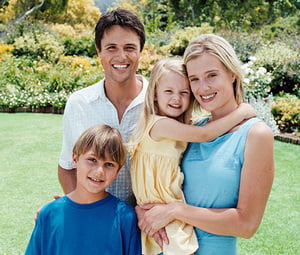While many of us were raised in a “spare the rod and spoil the child” old-fashioned sense, parenting has taken a more gentle approach to raising children over the past couple of generations. With more and more people frowning on corporal punishments such as spanking or caning, parents turn to a variety of non-physical punishments like grounding, loss of privileges or time-outs, as a means of exerting control over various situations. However, when some parents feel their hands are tied and find themselves unable to discipline their children in a way that they prefer, they will often resort to passive-aggressive behaviorisms in an attempt to regain control. Many people don’t even realize they’re doing it, but passive-aggressive parenting is a problem that is on the rise. Unfortunately, it often has a very negative effect on children who are victims of it.
What is Passive-Aggressive Parenting?
Originally, passive-aggressive behavior was thought to be a personality disorder but, more recently, there has been a great deal of controversy as to whether it’s an actual personality disorder or if it’s actually a defensive pattern. Rather than cropping up independently, passive-aggressive behavior often arises in situations where a child has been brought up by alcoholic, co-dependent or abusive parents. Raised in an environment where it’s unacceptable or potentially dangerous to show anger, these children learn to repress negative emotions, bottling them up over time. As they grow into adults, they still find themselves unable to cope with this negativity and find alternative methods to exerting control and manipulating others, while avoiding confrontation. In many cases, this leads to the development of a passive-aggressive personality.
Passive-aggressive parents may be the results of growing up in such a lifestyle, they may develop it independently or, in some cases, they simply adopt a passive-aggressive stance because they are unsure of how else to discipline of their children or maintain control of their day-to-day lives. As passive-aggressive parents, they have a strong need for control and dominance, often manipulating or guilt-tripping their family into following their rules. If things don’t go their way, they will frequently make excuses, cause chaotic situations or even resort to victimization in order to maintain control of a situation. Needless to say, this can not only be very stressful for the home environment, but can be very psychologically damaging to the child.
10 Things That Passive-Aggressive Parents Do
According to Dr. Scott Wetzler’s book “Living with the Passive-Aggressive Man,” there are 11 different responses that help to identify passive-aggressive behavior. Many of these traits are often seen in passive-aggressive parenting as well. Here are some examples of how Dr. Wetzler’s list of traits applies to the passive-aggressive parent:
Obstructionism: Obstructionism is a very popular punishment tool in passive-aggressive parenting. By procrastinating on important decisions (usually on things that the child wants or needs), the parent is able to exert their control and dominance over the child. Keeping the child dependant upon their answer and not offering any length of time or definite outcome, they are able to maintain control over things, manipulating the child into the behavior they desire.
Creating chaos: Provoking or feeding into chaotic situations is another common trait of passive-aggressive parenting. By creating chaotic situations, the passive-aggressive parent is able to assert their own form of control and dominance. Keeping the rest of the family unsettled and uncertain, they often make it seem as if they are the only ones who can make sense of the situation. By being the only ones capable of controlling this drama, they keep the rest of the family feeling unbalanced and unsteady, often making them more reliant upon the passive-aggressive parent.
Emotional distance: Passive-aggressive parents often seem emotionally distant and withdrawn. It’s not because they dislike their children or don’t care about them – most passive-aggressive parents care very deeply. However, many people who are passive-aggressive often have a strong fear of dependency or of becoming emotionally attached. They will often keep themselves at a distance, telling themselves that their child will leave as soon as they turn 18 and often hiding their own insecurities under a veil of teaching the child about independence and the ‘real world.’
Fear of competition: Since many passive-aggressive parents have a fear of competition, they will often avoid activities that they feel ‘pit’ them against other parents. If there is a chance that they may look poorly or come in second-best, whether to their children or to the general public, they will avoid any risk of competition. This may include having people over to the house, being involved in the local P.T.A. and other parenting groups, or can even be something as simple as making excuses for not participating in a bake sale or other fund-raising events.
Making excuses: Hand in hand with the fear of competition, many passive-aggressive parents often tend to make excuses. This may be so they don’t have to participate in any team activities or, if they cannot find a way out, they will also make excuses as to why their performance may be sub-standard. Most passive-aggressive parents will offer excuses before ever admitting something may not be right.
Tardiness/Forgetfulness: Always arriving late or forgetting things that are important to the child are common traits in passive-aggressive parenting. By forgetting things or running late, they are further able to exert their control over the child, keeping them unsettled, uncertain and expectant. This is a common method in which many passive-aggressive parents punish their families.
Ambiguity: Being deliberately vague helps the passive-aggressive parent feel they are maintaining control. By not making themselves clear and resorting to cryptic messages or ambiguous comments, these parents are able to keep the upper hand through the children’s uncertainty. This also enables them to avoid blame, as there is nothing concrete to hold them to things.
Victimization: Passive-aggressive parents often resort to victimization. The passive-aggressive parent will never accept that they, as parents, can ever do something incorrectly or that they can be wrong. If they feel the shift of the blame moving in their direction, they will often argue that they are tired of being made a scapegoat and accused of things. Playing the victim and failing to accept one’s own weaknesses are common traits often seen in passive-aggressive parents.
Sulking: Sighing and sulking are also behaviorisms that are commonly seen in passive-aggressive parents. Usually accompanied by something known as the guilt trip, passive-aggressive parents try to manipulate their children into acting a certain way or performing tasks by making them feel guilty. Rather than resorting to anger or confronting the child, they instead act put out and make statements such as “Go ahead and do it. You will anyway.” This is designed to make the child feel bad for hurting or upsetting their parent, guilt-tripping them into changing their behavior.
Is Sparing the Rod Harming the Child?
While some people may promote a more passive approach to parenting, the passive-aggressive parent actually creates a more harmful environment for their child, rather than a healthy one. Studies have shown that children who are raised in a passive-aggressive environment often have troubles relating to their own emotions and coping with anger or other powerful feelings. Unable to express themselves properly, and uncertain as to how to deal with negative emotions, they often harbor their feelings and let them fester, growing into adults who are often vindictive or have manipulative tendencies. For this reason, it’s important to raise children so that they learn how to confront and deal with their anger and other emotions, thereby breaking the passive-aggressive parenting cycle.
Granted, this doesn’t mean that one should resort to corporal punishment and that spankings should be the way to deal with unruly children. What this is saying is that it’s important to realize that there are times when we can do just as much (if not more) damage to our children, without saying something we might perceive as negative or without ever laying a hand upon them. It’s important that we raise them so they can grow to be happy, well-adjusted adults.
Sources:
http://guiltedgirls.tripod.com/id23.html – Information about passive-aggressive behavior
http://passiveaggressive.homestead.com/patraits.html – Information on passive-aggressive traits


